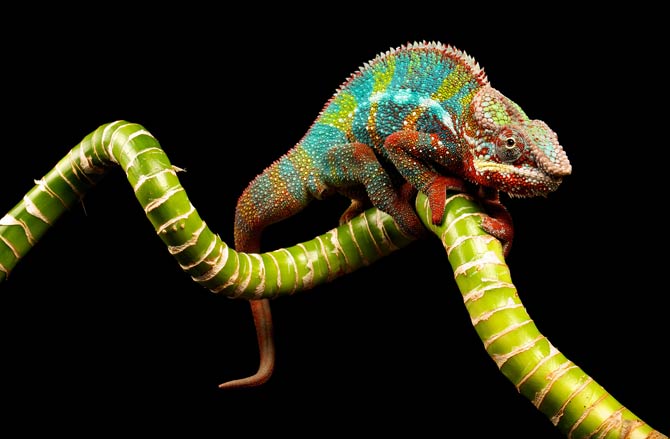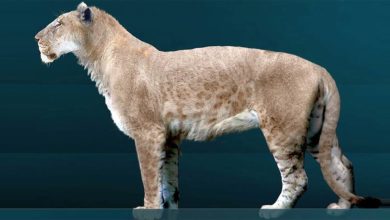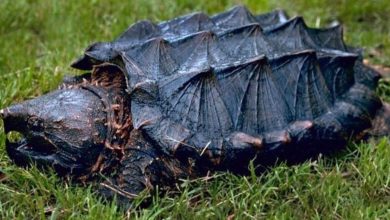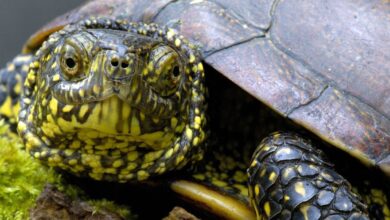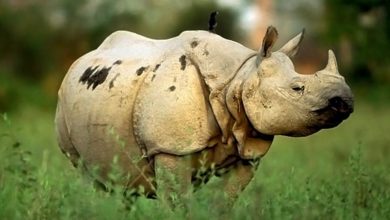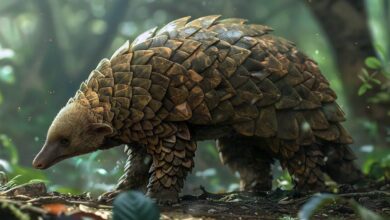Chameleons or chamaeleons (Chamaeleonidae)
Chameleon (Greek: chamailéōn) – a lion on the ground
Chameleons are known mainly for their ability to change color, helping them to blend in effectively with their surroundings. However, these animals have many other extraordinary features that make them live on our planet for at least 100 million years…
Classification
- Kingdom: Animalia
- Phylum: Chordata
- Class: Reptilia
- Order: Squamata
- Suborder: Iguania
- Clade: Acrodonta
- Family: Chamaeleonidae
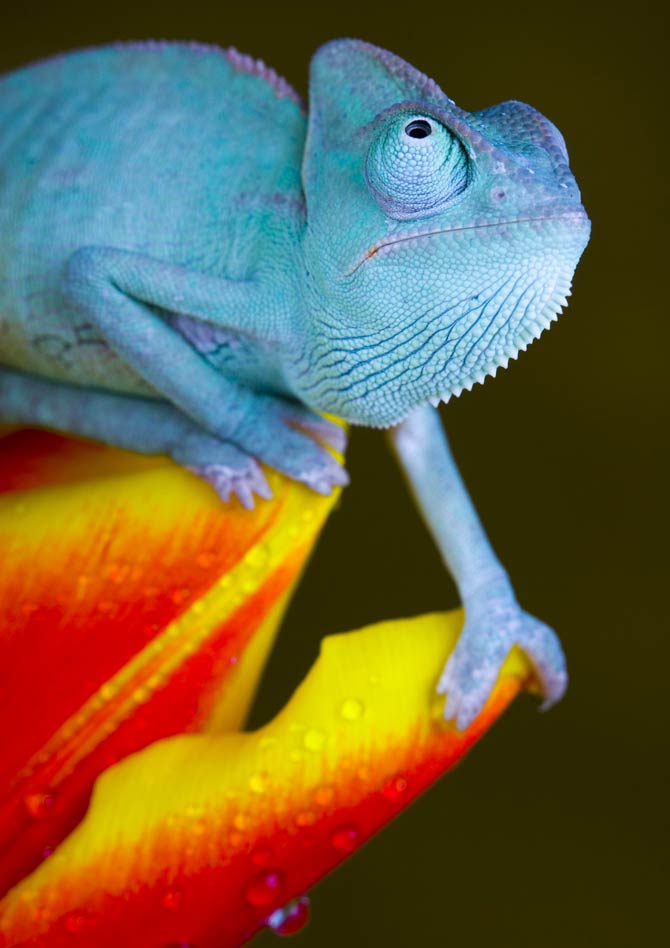
Chameleons
Chameleons (Chamaeleonidae) are a family of lizards adapted to an arboreal lifestyle, capable of changing body color. There are over 200 species described, which are divided into two subfamilies: The Real chameleons (Chamaeleoninae) and the Brookesiinae. Almost all chameleons are endangered in their natural habitat, which is why they come under the Washington Convention on the Protection of Species and their keeping is therefore subject to notification.
The chameleon is a lizard
The chameleon belongs to the lizard group. It lives in forests in Africa and Madagascar. Single species can be found in Europe, Hawaii, Florida (USA) and the Middle East. It often occurs in areas located at high altitudes; hunts mainly insects, also does not despise smaller lizards and rodents; it also eats fruit, possibly to quench thirst.
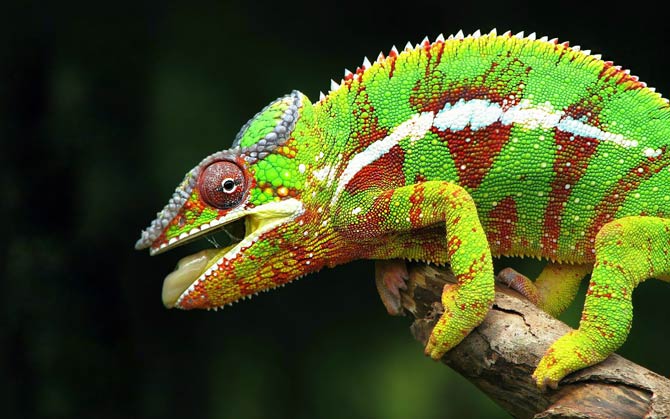
Change of color
Chameleons are known for their color change ability, which helps these slow-moving animals mask themselves while hunting and protect themselves from predators. Contrary to popular belief, this ability does not consist in radically changing colors, but in adopting different shades of the same color.
When the chameleon is disturbed, it flattens the body, hides behind branches and becomes still. In combination with the color change, such camouflage makes it almost completely invisible to the predator.
The skin of some species is often covered with horns or spikes, which give them a menacing appearance – such an amazing face is supposed to deter intruders.
Contrary to popular belief, chameleons do not adjust their color to the color of the surroundings – their color changes with the change of physical and emotional state. Color change is also a form of communication with other individuals, although their natural color often corresponds to the type of environment in which they are present.
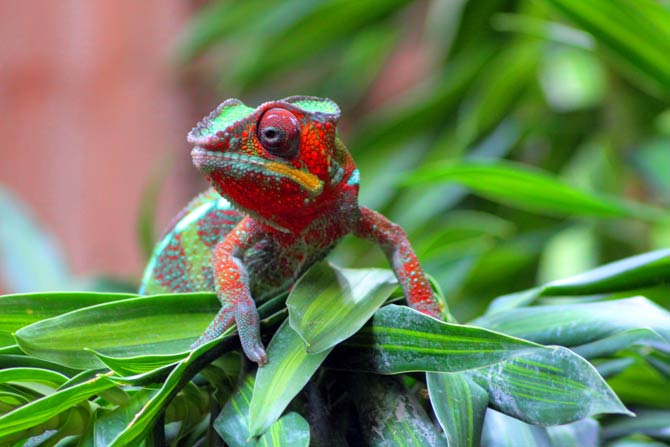
Hunting
This lizard hunts while lurking motionlessly on branches or leaves. When the victim comes close enough to attack, the chameleon “throws” its tongue out at it with high speed. The captured animal is immediately wrapped in its tongue and swallowed.
Chameleon tongue
The chameleon’s tongue is covered with sticky mucus and its length (depending on the species) is equal to or greater than that of the chameleon itself.
Living in the trees
The chameleon is very well adapted to living on trees. It has a long, flexible tail that wraps around the branches. Partially rolled up fingers allow the reptile to move around the thinnest twigs.
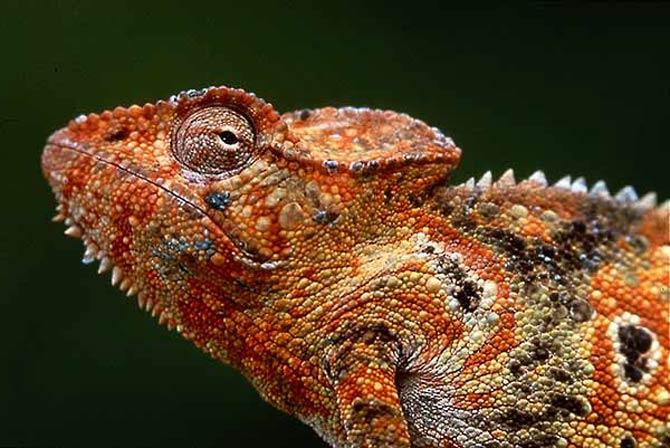
Evolution
The oldest known chameleon was found in Europe (the find is about 26 million years old). However, chameleons are probably much older than this one (there are findings more than 100 million years ago). Fossils have also been found in Africa and Asia, and it is believed that chameleons were once more widespread than they are today. They may have their origins in Madagascar, which today is home to almost half of all known species of this family, then dispersed to other lands.
The largest chameleons in the world
- Malagasy giant chameleon / Oustalets’s chameleon (Furcifer oustaleti / Chamaeleo oustaleti) – up to 100 cm (39.4 in) / female up to 50 cm (19.7 in)
- Parson’s chameleon (Calumma parsonii) – up to 68 cm (26.8 in)
- Yemen chameleon / Veiled chameleon (Chamaeleo calyptratus) – up to 65 cm (25.6 in)
- Meller’s chameleon / giant one-horned chameleon (Trioceros melleri) – up to 61 cm (24 in)
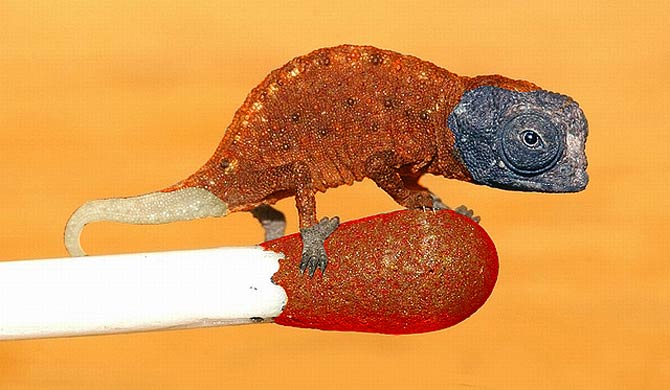
The smallest chameleon in the world
Brookesia micra is the smallest chameleon in the world – species only described in 2012. Occurs in Madagascar. It is estimated that this species does not exceed 30 mm (1.2 in) in length.
The specimen of Brookesia micra found in 2007:
- Total length: 23.6 mm (0.9 in) long
- Head and body length: 15.8 mm (0.6 in)
- Tail length: 7.8 mm (0.3 in))
Brookesia micra is also one of the smallest known amniotic vertebrates.
Brookesia micra is distributed only in two geographically limited areas of the north-Madagascar island of Nosu Khara. Animals live in tropical forests growing in arid climates. Brookesia micra in the daytime move among calcareous rocks and fallen leaves, while at night they climb low-hanging tree branches (to a height of 5-10 cm).
The skin color of Brookesia micra in a calm state is dark brown, only under the eyes they have beige spots. When a danger arises, the brown skin of the animal becomes covered with gray-green spots. The head and its crest in such situations become gray-brown, and the tail becomes yellow in color, at the tip of the tail – orange.
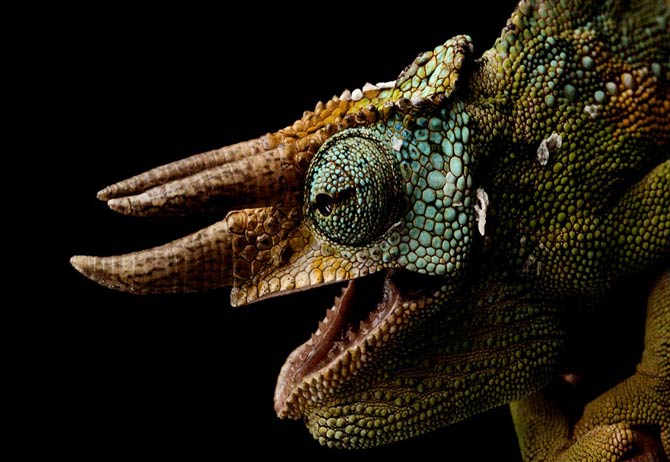
Chameleon commonly kept in captivity
| Common name | Scientific name | Length (male) | Length (female) | Color | Lifespan (years) |
| Veiled chameleon | Chamaeleo calyptratus | 35–60 cm | 25–33 cm | Green and light colors | about 5 |
| Jackson’s chameleon | Trioceros jacksonii | 23–33 cm | 25–33 cm | Green and light colors | 5–10 |
| Panther chameleon | Furcifer pardalis | 38–53 cm | 23–33 cm | Darker colors | about 5 (2–3 for birthing females) |
| Bearded pygmy chameleon | Rieppeleon brevicaudatus | 5–8 cm | 5–8 cm | Brown, beige, green | about 3–5 |
| Spectral pygmy chameleon | Rhampholeon spectrum | 8–10 cm | 5–10 cm | Tan and gray | 3–5 |
| Usambara pitted pygmy chameleon | Rhampholeon temporalis | 6–10 cm | 5–9 cm | Gray and brown | 5–11 |

Chameleon – interesting facts
- The largest chameleons reach a body weight close to 1 kg (2.2 lb).
- Some chameleons use mimicry to take the shape of dried leaves.
- When a lizard feels threatened, it takes a deep breath. Puffing up the whole body seems bigger and more dangerous than it really is.
- Chameleon eyes can rotate in all directions, independently of the other.
- Chameleons have been present on Earth for at least 100 million years.
- The chameleon is able to grasp its prey by a sticky discharge covering the tip of its tongue.
- Changing coloration is also used by the chameleon to show… feelings. Irritated darkens and reacts to danger by lightening the color.
- A chameleon’s tongue is longer than its entire body length.
- During hunting, a chameleon’s tongue can be thrown at a speed of 5 m/s. It takes less than 0.01 seconds to reach the victim.
